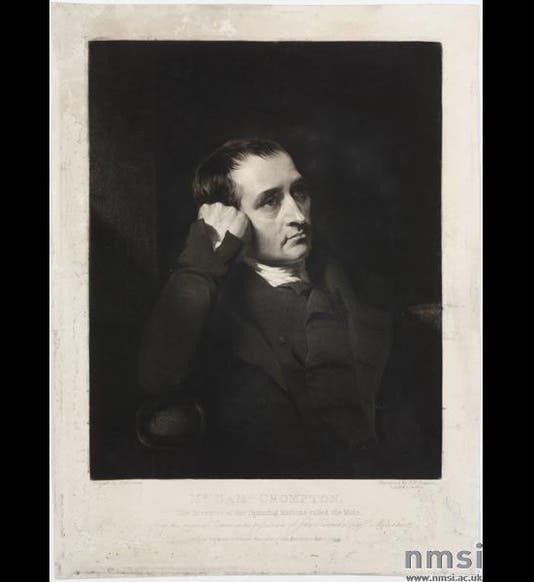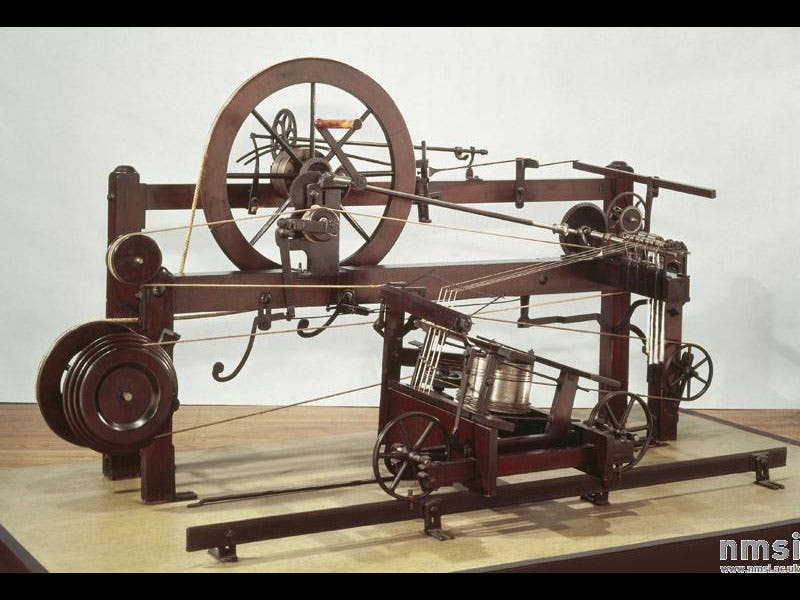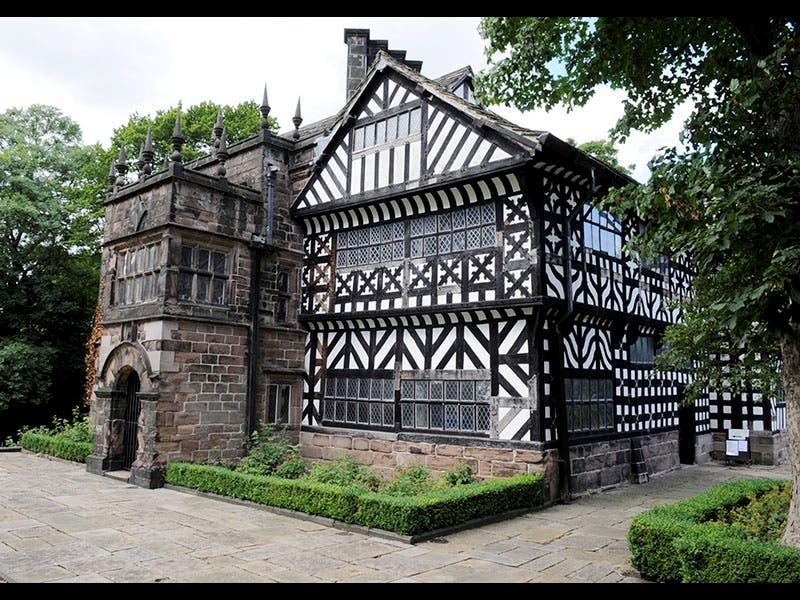Scientist of the Day - Samuel Crompton
Samuel Crompton, an English weaver and inventor, was born Dec. 3, 1753. James Hargreaves had invented the spinning jenny in 1764, which greatly speeded up the production of thread for weaving, and Richard Arkwright followed with his improved water frame in 1769, but the thread from both of these machines was only suitable for the weft (the cross-threads), and was not strong enough to serve as a warp. So Crompton got to tinkering and developed a cross between the spinning jenny and the water frame, which he naturally called, because of its hybrid nature, a mule. Not willing to engage in a patent scuffle with Arkwright, who was very rich and powerful, Crompton decided to keep his invention a secret and just make thread to sell. His thread was so outstanding--stronger and thinner than anyone else's--that he greatly increased his income, but found himself besieged by industrial spies trying to discover the secret of his mule. Finally, Crompton decided to release his invention to a consortium of local textile manufacturers, hoping that they would recompense him honorably (and richly). He was most disillusioned in these hopes, as he was paid a total of £60 for his labors. Many years later, in 1811, when he discovered that of the 5 million spinning devices in use in England, well over 80% were using a version of his mule, he took his grievances to Parliament, and they paid him £5000. Crompton was still disgruntled, but he plowed the money back into another venture, lost it all, and died, relatively impoverished, in 1827.
The images show: a mezzotint portrait of Crompton; a replica of his mule in the Museum of Science and Industry; a statue of Crompton in Bolton; and Crompton’s home, Hall i’ th’ Wood, now a Bolton museum.
Dr. William B. Ashworth, Jr., Consultant for the History of Science, Linda Hall Library and Associate Professor, Department of History, University of Missouri-Kansas City. Comments or corrections are welcome; please direct to ashworthw@umkc.edu.







![Andromeda and Perseus, constellations figured by James Thornhill, with star positions determined by John Flamsteed, in Atlas coelestis, plate [15], 1729 (Linda Hall Library)](https://assets-us-01.kc-usercontent.com:443/9dd25524-761a-000d-d79f-86a5086d4774/1b30cfec-5be6-4297-a7fb-97255ba992e5/thornhill1.jpg?w=210&h=210&auto=format&fit=crop)


